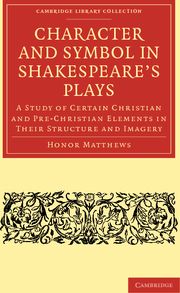 Character and Symbol in Shakespeare's Plays
Character and Symbol in Shakespeare's Plays Chapter VI - The Transition
Published online by Cambridge University Press: 07 September 2010
Summary
In Macbeth Shakespeare presents evil in a form more violent and apparently more impervious to challenge than that used by him in any other play, and against this evil he allows the forces of good to achieve their most signal victory. When Birnam Wood covers the bleak hills of Dunsinane the very earth itself ‘blows into life's flower again’, and men's ancient faith in the recurrent miracle of Spring is given direct presentation in English literary drama for the first time. Every year Shakespeare and the men and women of his audience would see young men and girls
Spring sooner than the lark to fetch in May.
Every year they would see the ‘Green Men’, the ‘Jacks in the Green’, joining with the other dancers round the Maypole in celebrations which had lingered on from an immemorial worship of nature's fertility. In bringing the boughs of Birnam Wood against Macbeth's apparently impregnable fortress Shakespeare created the greatest theatrical image of the victory of life over death, and therefore of mercy over justice, that we can hope to see. This is the form in which he shows how ‘The powers above put on their instruments’. The men who bear before them the boughs of Birnam Wood bring to the most death-ridden of the tragedies the most brilliant promise of life.
- Type
- Chapter
- Information
- Character and Symbol in Shakespeare's PlaysA Study of Certain Christian and Pre-Christian Elements in Their Structure and Imagery, pp. 165 - 187Publisher: Cambridge University PressPrint publication year: 2009First published in: 1962


